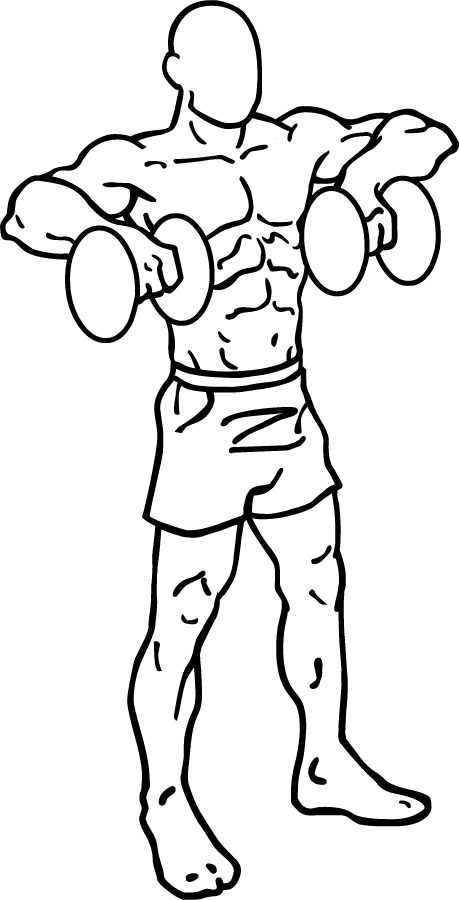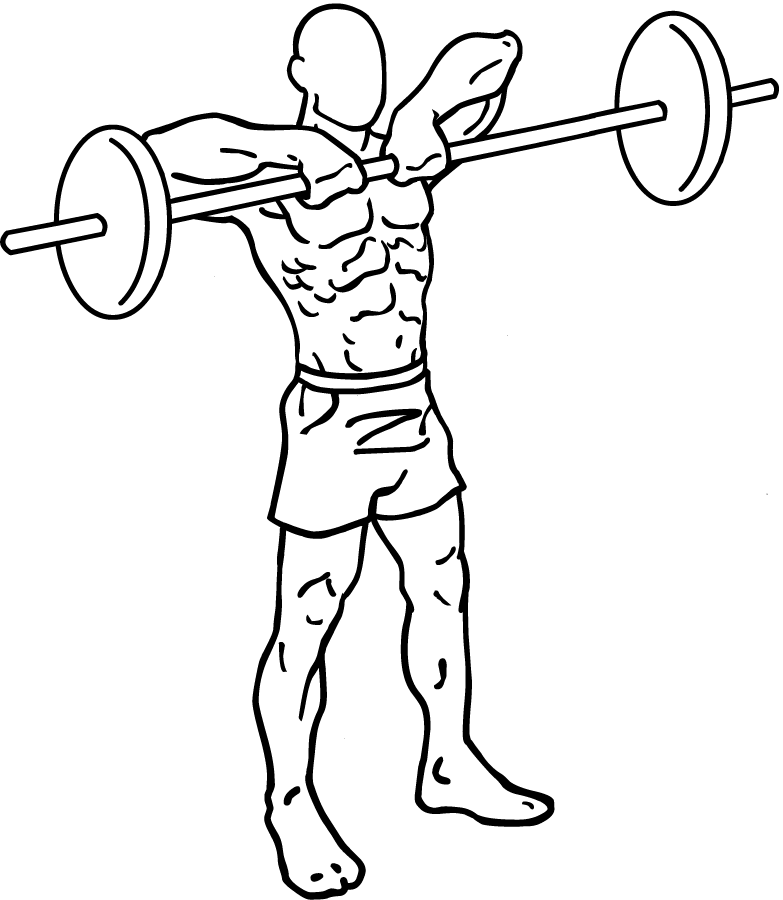Shoulder exercises
The shoulders emphasize the whole body and give the build even dressed. Combined with a powerful back and drawn pecs, they are a pleasant sight. It is therefore important to strengthen your shoulders if you want an athlete's aesthetic physique.
The important thing for the shoulders is to muscle the three beams fairly, without favoring one in particular. If one of them has a developmental delay, the harmony of the whole will be damaged. Often it is the posterior bundle that is lacking because the anterior bundle is often overloaded. In this case, it will be necessary to rectify the shooting to avoid any worries.
The shoulder joint is complex and fragile. The deltoids should be strengthened but also the rotator cuff strengthened, important deep muscles that ensure a good stability of the joint and protect against injuries.
How to strengthen the shoulders? What are the best exercises? What weight training program do for deltoids? How to musculate the shoulders with dumbbells or without equipment?
You will find in this section all the most effective exercises for the shoulders, and we will give you many advices to realize them, in complete safety.
Developed in front
The developed ones are perfect for forging massive shoulders. The developed one reinforces the muscles of the shoulders, especially the front and the side, and indirectly the top of the pecs and the triceps. This is a very complete polyarticular exercise that will give you more muscle gains and strength than isolation exercises like frontal or lateral elevations. The barbell front or dumbbells are two of the best exercises for the shoulders, for both beginners and experienced.
Developed with dumbbells

This exercise of weight training solicits the muscles of the shoulders, and indirectly the triceps - with the back of the arms - and the top of the pecs. It is a basic exercise, ideal to take mass, thickness and build massive shoulders.
Often recommended for beginners but also appreciated by advanced practitioners because less demanding for the joints, the dumbbell developed allows a better amplitude compared to the bar. The movement is more natural, comfortable, and remains less risky than other developed especially when it is done sitting on a bench.
Nape developed
This bodybuilding exercise solicits the shoulders. The developed are basic movements, very effective for forging good shoulders. In this variant of developed, the bar is lowered vertically behind the neck, up to the level of the ears. The objective is to target the side and the back of the shoulder, compared to the developed by front which targets him rather the front.
The developed neck is an unnatural and risky movement that can lead to shoulder problems. Although often performed indoors, we do not recommend doing this exercise. Indeed, it is not suitable for all body types and can hurt. Prefer the version in front.
Targeted muscles
It requires the middle (lateral) and posterior bundles of the deltoid. Upper trapezius, triceps and anterior serrations are also involved in the movement.
Rowing chin

If you want to gain shoulder width and thicken your upper back, then the rowing chin should interest you! This exercise of called bodybuilding, which consists of pulling the bar vertically up to the chin, a "rowing chin", solicits the muscles of the shoulders and trapezes indirectly.
Not practiced in the room, it is yet a basic movement very complete. In addition to strengthening shoulders and trapezius, it can also be useful for balancing the work of the bust. Indeed, we tend to do a lot of exercises where we push down and forward as the dips or the pulley vis-à-vis; we ask too much the front of the bust!
To compensate, the rowing chin is interesting and will solicit all the back part. In its wide version, it is besides the antagonistic movement par excellence dips!
Targeted muscles
It requires especially the middle beam (side of the shoulder) and posterior of the deltoid (back of shoulder) but also the trapezius, biceps and forearm.
One can do the rowing chin at the bar, with a wide or tight grip, but also with dumbbells and even machines. The wide grip especially targets the shoulders while the tight grip favors the work of trapezes. Most practitioners use a tight grip.
Note that the trajectory of the bar also has an influence. If the latter is close to the body, the side of the shoulder picks up. If it is moved forward, the front of the shoulder participates.
In addition, if you raise the elbows higher than the horizontal by bringing the bar at the level of the nose, the trapezes intervene much more. It is the same for the side elevations.
Lateral elevations
This weight training solicits the shoulders, especially the side beam, on the side, which gives the famous shoulder width as desired. It is true that the build is the first thing you notice when you meet someone in the street. big and well curved, good shoulders showcase you dressed. No need for padding or epaulettes to accentuate the build of his costume! Let's say it, shoulders at the top, huge and dry, it makes its effect! So better bet on this key muscle group and leave nothing to chance ...
At the training level, nothing better than doing basic movements such as barbell or dumbbell, to take the overall mass and thicken the entire upper torso. Complete, if necessary, with isolation movements such as side elevations to the pulley if you are lacking sturdiness (thick in profile but lack of width), or inclined bird if you lack thickness (wide but thin of profile). The goal is to target a specific part of the shoulder, rather late, to polish the details.
Targeted muscles
Lateral elevations mainly use the middle deltoid beam but also the trapezius, especially when the arms are raised higher than the horizontal (not recommended). Indeed, the deltoid rises arm horizontally until the humerus abuts on the acromion of the scapula. The trapeze then comes into action to tilt the shoulder blade and complete the movement. Not to mention the supraspinatus, which initiates the movement.
0 Comments